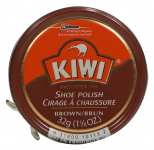Do you know if any study confirmed this or is this just anecdotal observation? Not having any experience with that company's boots other than the complaints I saw on this means, I can't make any judgement on whether their design or poor quality contributed to an increased incidence of stress fractures, particularly among recruits. However, (and my experience with the subject is dated) lower extremity injuries are/were the most common medical complaint among recruits. It's also the one of the most common generally among all soldiers. In some of the studies that I've reviewed that looked at the issue, when that factor was analyzed, the type or brand of footwear did not significantly contribute to an increase in stress fractures.
My interest in the subject was piqued back in the 1980s when I was in the SurgGen branch at NDHQ. There had been a few anecdotal observations about an increase in foot related medical complaints at the various basic training establishments (back then Cornwallis, St. Jean and Chilliwack) and a note ended up on my desk to have a look at the stats and write a briefing note for my director. In those days before computers (or at least not on every desk) that required a lot of pulling of paper from archives. There had been a slight increase in sick parade visits for such complaints (I looked at a ten year trend) but nothing that got any money to do a formal study. At the time I did a journal search to see if this had been looked at by anyone else. It had been; there were journal articles from medical types in a few other countries that addressed the issue. The one that most sticks in my mind was from Singapore. Their conclusion (and one that was somewhat echoed by some of the other articles) was that the increase of foot complaints was mostly down to a societal change - specifically the footwear worn by youths. While at one time the wearing of leather footwear (shoes or boots) was a normal thing even as a youngster, by the late 1980s there were now generations who had never worn solid leather footwear (especially combat boots or similar) until they went to basic training. All they had ever put on their feet before military service time were sneakers and flipflops.
It was anecdotal, but out of a platoon of 50ish of us, 3 had stress fractures in their feet (one had it in both) just in our course, and all had the royer boots. A number of the other people that didn't have stress fractures would slip everywhere when it got below freezing. There was also a whole whack of people stumping around on PAT at the time for the same kind of foot fracture from other serials. From what my wingers were saying, it was common enough that there was a SOP for those boots to get vibram soles dropped on at a local cobbler.
Then when the army types went to battle school, a few others dropped off their courses with stress fractures, and at some point all of them got told to stop wearing the royer boots unless they had been resoled.
So anecdotal, but with a really high correlation of the same type of boots. Not necessarily causal, but if dozens of people have the same busted feet, and all are wearing the same boot, with no one else having the same issue with different boots, it's a reasonable assumption to make a causal link as a precaution. That was back in 2005/2006ish, so pretty fuzzy on the details, but we ended up partly carrying the two tough SOBs that limped through the final ruck march with busted feet so they didn't have to redo the entire officer course, so it sticks out.
From what I remember, they said the boots were pretty stiff, but the soles got really hard when they got cold, so the boots stopped flexing and didn't absorb anything, so I could see that being an issue. They were also skating, as soon as there was a bit of frost on the ground, so even without the foot fractures they were a safety issue. I think it was their mulligan boots that fell apart, so no idea how they had gotten a third kick at the can. Just from a risk to personnel and liability perspective it makes no sense not to blacklist them from future CAF contracts, but 'fairness and transparency' rules the procurement game.
Edit to add: the people with busted feet came from in a variety of sizes and fitness levels, but some had worn work boots daily for years and still found them really uncomfortable, so don't think it was an unfamiliarity with that type of footwear. They were just really crappy boots for walking in. If the problem is immediately fixed by swapping the soles, probably a good link.





